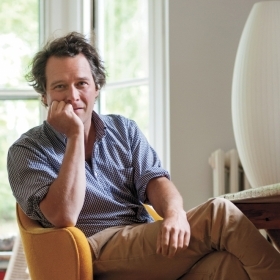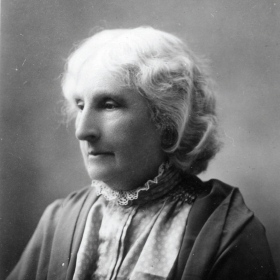When Flavia Laviosa was a young woman in Bari, Italy, she had a front-row seat for a golden age of artistry in Italian cinema. “I grew up at a time when education became free and accessible to everyone, and I had easy access to film screenings,” says Laviosa, senior lecturer in Italian Studies. “Those were the years, into the ’70s, when the great masters of Italian cinema started making and distributing their masterpieces—Fellini, Antonioni, Visconti, Rosellini, Pasolini. We were being educated to the best film aesthetics that Italy could produce.”
Laviosa came to Wellesley 23 years ago, hired to teach Italian language and culture. Soon her early experience as a cinephile led to an expanded job description. Along with a master’s in humanities and a Ph.D. in foreign-language education from the State University of New York at Buffalo, she studied for a master’s in European film studies at the University of Edinburgh.
Scotland is a country where cinema is “very much appreciated and very much an art form that is widely produced and distributed,” Laviosa says. “Having that full immersion experience in the world of film studies as well as film production developed this new passion in me.”
Back at Wellesley, Laviosa started teaching cinema, including courses on Italian women directors, as well as a theory course in the Cinema and Media Studies department. While exploring this new arena, Laviosa conceived an idea for “a whole new forum to strengthen the scholarship within the field, to redefine the canon.” The result is the peer-reviewed English-language Journal of Italian Cinema & Media Studies, published by Intellect and launched in 2012, of which Laviosa is founding editor. Wellesley College grants support the salaries of two student editorial assistants.
Laviosa’s favorite directors are Italians Michelangelo Antonioni and Luchino Visconti, “of course.” But at present, she feels, the finest films come from Russia, China, and France. The journal explores the intersections of other countries with Italian filmmaking. “Italian cinema is not being studied as a national cinema, limited to geographical boundaries, but as cinema that has influenced other cinemas, and is being influenced by other cinemas internationally,” she says. “It is a transnational form of cinematic art.”








We ask that those who engage in Wellesley magazine's online community act with honesty, integrity, and respect. (Remember the honor code, alums?) We reserve the right to remove comments by impersonators or comments that are not civil and relevant to the subject at hand. By posting here, you are permitting Wellesley magazine to edit and republish your comment in all media. Please remember that all posts are public.